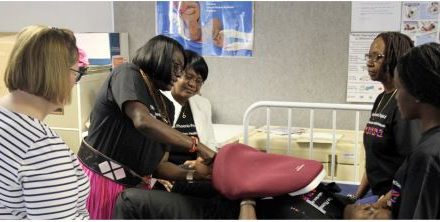
Steady Malaria progress but sub-Sahara Africa remains most vulnerable
15 December 2016 – The World Malaria Report 2016, released this week by the World Health Organization (WHO), has found that access to core malaria-fighting tools has expanded rapidly for the world’s most vulnerable populations: children and pregnant women in sub-Saharan Africa.
The annual report, which tracks progress and trends in malaria control and elimination across the globe, also shows that acceleration is needed to remain on track to achieve a number of key 2020 malaria targets.
The 2016 report highlights dramatic improvements in diagnostic testing for children and preventive treatment for pregnant women. National surveys from 22 sub-Saharan African countries show that 51% of children under the age of five with a fever received a malaria diagnostic test in the public sector in 2015 compared to 24% in 2010. In 36 African countries, the number of pregnant women who receive Intermittent Preventive Treatment has increased five-fold during the past five years. In addition, WHO data reveals that, for the first time, more than half of sub-Saharan Africans (57%) sleep under insecticide treated nets or are protected by indoor residual spraying.
The report, however, reiterates the scale of the challenge remaining to keep malaria elimination on course. Sub-Saharan Africa still carries the highest global malaria burden, with 92% of the 212 million new malaria cases and 429,000 deaths worldwide in 2015. The data illustrates the continued need for a coordinated and collaborative pan-African response.
The report calls for more robust funding, noting that governments of malaria endemic countries currently provide 32% of total funding for malaria. African countries are increasingly providing additional resources for malaria by increasing domestic funding and supporting international efforts. Benin, Cote d’Ivoire, Kenya, Namibia, Nigeria, Senegal, South Africa, Togo and Zimbabwe contributed to the Global Fund’s Fifth Replenishment in September 2016.
Despite these efforts and the progress highlighted by this year’s report, much of the continent is still off track to reach the goals established by the Global Technical Strategy (GTS) for Malaria 2016-2030 – the technical framework developed by the WHO for all endemic countries as they work to control and eliminate malaria.
“The report serves as a reminder that visionary African leadership and pooling of our collective knowledge and resources are of critical importance to bringing about the action and acceleration needed to keep malaria elimination on course,” said Joy Phumaphi, Executive Secretary of the African Leaders Malaria Alliance.
Founded in 2009, the African Leaders Malaria Alliance is a coalition of 49 African governments working across country and regional borders to achieve a malaria-free Africa by 2030.












































